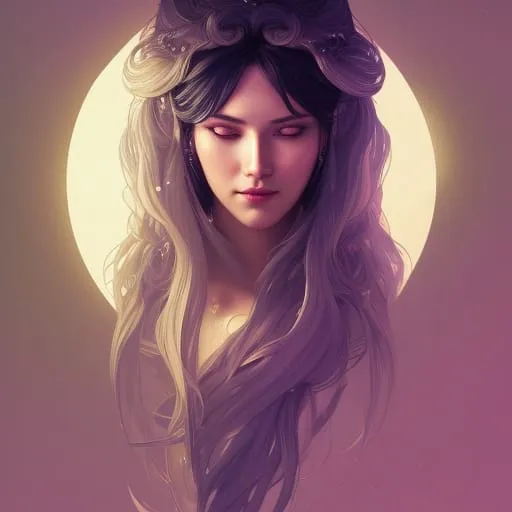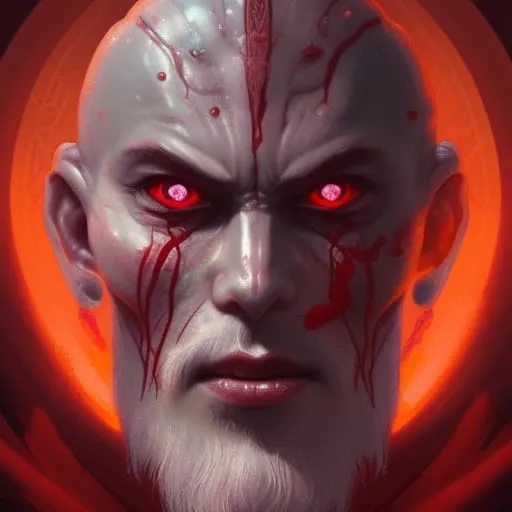|
|
Cosmology of Gods of Korovia
Korovia has many different gods, demi-gods, totem gods, and quasi-deities. The six main gods are Metrequia, Xarsius, Triquirius the Thrice Reborn, Karolina the Cold, Olegma the Hard and Pasha the Fleeting.
Metrequia
Goddess of paladins and goodness. Symbol is a white or silver moon with a grey shield. Metrequia is the the great creator, the great mother, the great protector. Often also called the Goddess of the Silver Moon. The vast majority of goodly people worship Metrequia, her children or her allies. In different parts of Aoerth she is also known as Metria, Quias, Mitras, etc. Metrequia is old elvish for Moon Queen. Metrequia has two Archons (Lesser Gods) which are considered to be her children:
Belnark
Representing bravery, modesty and humility, Belnark is often worshiped given homage by worshipers of Metrequia (eg. paladins and goodly warriors) to give them strength and courage in battle.
Valmaria
Representing patience, forgiveness, love and kindness, Valmaria is also considered to be a goddess of healing and protection. Priests of Metrequia who also pay homage to Valmaria often focus on protecting the innocent and shielding them from harm.
Xarsius
Patron god of bloodlust, vampires, cannibals, assassins. Symbol is a red eye. Xarsius is the ultimate destroyer, the angry father, the great murderer. The vast majority of evil people worship Xarsius, his children or his allies. In different parts of Aoerth he is also known by the names Xarkan, Xarsamor, Zarsius, Zarzeus, etc. Xarsius is draconic for Blood Overlord. Xarsius has two Archons (Lesser Gods) which are considered to be his children:
Masexus
Representing wrath, lust and vainglory, Masexus is given homage by worshipers of Xarsius who likewise seek strength in battle. He is also considered to be a god of rape and destruction.
Privica
Representing greed, sloth, gluttony and pride, Privica is the chosen goddess of overweight merchants, wealthy despots, and corrupt rulers. In battle Privica prefers to employ others to do her fighting. THE FOUR ARCHONS The Archons are moderately powerful gods considered to be gods of immortal emotions, and therefore are eternal. The Archons of Light are the children of Metrequia and the Archons of Darkness are the children of Xarsius. The Archons are never worshiped by themselves, but always in combination with their parent god. THE ELEMENTAL GODS
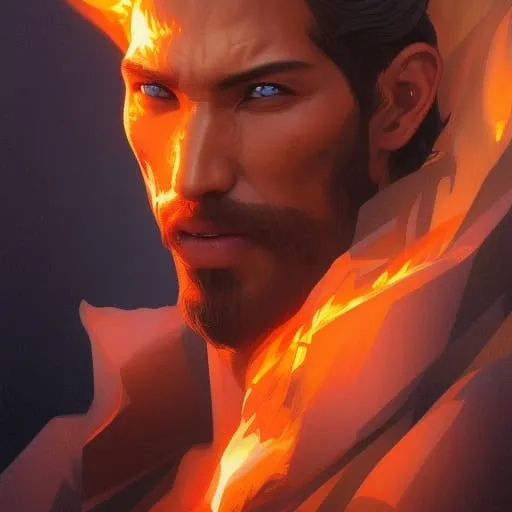
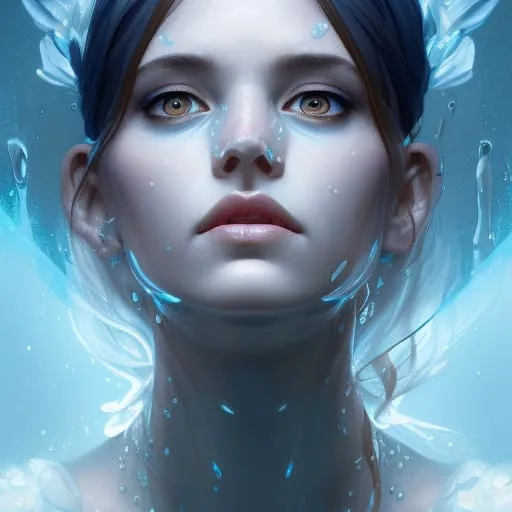
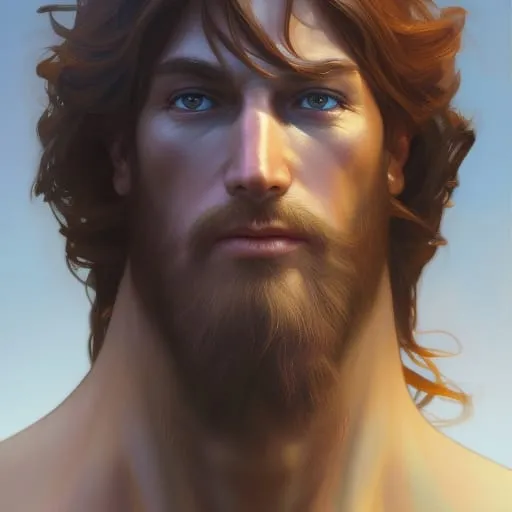
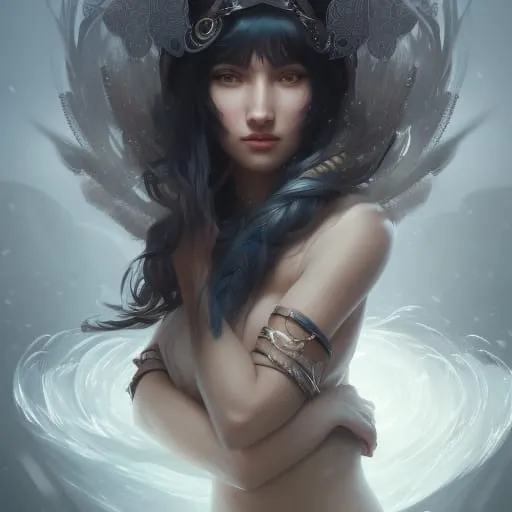
Triquirius the Thrice Reborn
Triquirius is often worshiped by metalsmiths, dwarves, rangers, druids and similar peoples who believe fire is both a tool and a weapon. Even some paladins are known to pray to Triquirius. In ancient legend Triquirius gave fire to the dwarves and later taught them how to forge bronze weapons. He is also the god of rebirth and the phoenix is a sacred creature to him Brightness. Some dragons and barbarians also worship him in Loqland. The symbol for Triquirius' temple is a candle flame either alone or two candle flames together, depending on the age of the temple. In ancient times the symbol was only a single candle flame. According to prophecy Triquirius will be reborn three times, and when the third rebirth happens he will change the symbols of the church to three candles.
Karolina the Cold
Karolina rules with cold justice. She can be a source of life and a source of death. Her brand of justice is popular amongst some paladins and she is the patron goddess of Azek the Ice City. When the glaciers began melting 12 years ago her followers began to dwindle, but they are still strong in the far north and in mountain regions. Her symbol is an 8-pointed star-snowflake and her clerics often craft maces and morningstars in that shape.
Olegma the Hard
Commonly worshiped by dwarves, miners and metal smiths Olegma is an unforgiving and hard god. He is said to be greedy and doesn't easily give up what belongs to him. Druids also pay him homage because plants grow in the dirt which is his domain. (Most druids pay homage to all 4 elemental gods.)
Pasha the Fleeting
Typically worshiped by sailors and aeromancers Pasha is a fickle goddess. Her followers flock to regions known for terrible windstorms so they can feel the electricity in the air (known as Pasha's Kiss). She is said to be a passionate goddess who is prone to temper tantrums, but her gentle breezes are said to be loving caresses. LESSER GODS The lesser gods are plentiful. In ancient times every tribe had their own god and built totems to these gods, drawing on the mysteries of magic to cause their god to self-manifest. There were bear gods, oak gods, wolf gods, snake gods and many more. Below is a list of some of the gods that survived the test of time. Some towns and cults still worship local animal or plant gods. If all the totems of a particular animal or plant god is destroyed the god loses their power and new totems must be made to resurrect the god. To prevent their gods from falling many worshipers build hidden shrines to their gods so that if one or two shrines are destroyed there are always hidden backup shrines. Arvandus and Celiador (The Elven Gods) Male and female, Arvandus the Swordbringer and Celiador the Arrowsmith, are the two elven patron gods. Any elf who has not pledged themselves to a different god is considered to go to Arvandor when they die to sing, dance and hunt for eternity.
Beshar
A totem god that has been worshiped since the Stone Age, dating back to the Eagle Tribe and the Falcon Tribe who both paid homage to Beshar. Totems and shrines to this god dot the landscape, too numerous to count. He was once extremely popular but has become less so after the Last Demon War. Braezak (Minotaur God of Death) Necromancers, assassins, mercenaries and evil soldiers like to worship Braezak (lawful evil). Some evil monks and druids also worship him. His holy symbol is a black oval with a white minotaur skull inside. Most minotaurs in Korovia are lawful good, but some minotaurs do not always fall into that category. Fallen paladins (minotaur, human and otherwise) tend to worship Braezak and are called Skullguards (use the blackguard prestige class). The favoured weapon of a Skullguard is the Great-axe. Some Skullguards have been known to become Death Knights. Brudax the Vicious (Orc God) Unlike other races which usually have two racial gods, orcs in Loqland have only one: Brudax, who is said to be both male and female. Any orc who has not pledged themselves to a different god is considered to go to the Happy Killing Fields when they die where they fight for eternity. Damica and Jackvik (The Hab Gods) Female and male, Damica the Forest Hermit and Jackvik the Trickster, are the two Hab patron gods. Any Hab who has not pledged themselves to a different god is considered to go to the Sunny Forest when they die to eat mushrooms and fish for trout for eternity. Eravia (Drow Elf Goddess of Caves, Mushrooms and Bats) Eravia is a benevolent (chaotic good) goddess of caves and all of the natural creatures (and plants) that live in them. Thus her patron animals are things like bats and cave-bears. Mushrooms and mosses are also important to her faithful. While being an elvish goddess who is usually worshipped by druids, some gnomes and even miconid mushroom-folk also worship her. Her holy symbol is a black circle with a white mushroom in the middle. Galiaka and Hanvil (The Dwarven Gods) Female and male, Galiaka the Orcslayer and Hanvil the Hammersmith, are the two dwarven patron gods. Any dwarf who has not pledged themselves to a different god is considered to go to the Great Mountain when they die to mine and craft things for eternity. Gia and Titus (The Giant Gods) Unlike other lesser gods who are often totem gods, Gia and Titus are titans. According to legend, Gia is the daughter of Masexus and Privica, and Titus is the son of Belnark and Valmaria. They are the first of the titans, and finding themselves to be the only ones of their kind Gia seduced Titus and tricked him into marrying her. From their union she gave birth to the titans and giants. The titans and giants then chose to worship either Gia or Titus, raising both of them to god status. Learning that Gia had seduced him, Titus wandered for centuries and never truly forgave her, but eventually came back to her - they are said to have a love-hate relationship, during which whenever they fight / make love they cause earthquakes. Some giants even pay homage to both gods.
Indracus the Assassin
A grandson of Queen Introsia, Indracus was a half-elf who took after his great-aunt Indrasen. Said to have been trained by her, Indracus became a bandit who tracked down and assassinated the wealthy evildoers of the land and then redistributed their wealth to the needy. However his blood lust eventually got the better of him and he started killing people more for pleasure and eventually he started killing solely for profit. By the end of his life he was the most wanted criminal in Korovia, but he was never found or captured. Assassinations still happened once in awhile, people claimed to know him (or know someone who went by the name Indracus) and as the centuries went by Indracus's legend turned him into a god as assassins and the patrons of assassins began to pay homage to him, believing him to still be alive.
Lazriak the Wicked
The wolf-priests of Lazriak are technically not real priests. They're evil druids who worship Lazriak, or at least pay him homage. There is a whole pantheon of nature gods and Lazriak is one of the more notorious (and the most recent mortal to rise to godhood). His holy symbol is a black wolf with wings. They have no prestige class, yet, but his popularity is growing. Once called the Cult of the Wolf, Lazriak's druids now have an official god and they go out of their way to create war and destruction. The druids are hunters and they quite literally use cunning wolf-pack tactics. So much so that a ranger with wolf as his favoured enemy actually gains the bonuses when fighting against Wolf-priests. Lazriak himself was once a druid. He grew to such power that he no longer aged. He developed an army of followers, wolf and humanoid alike. It is Lazriak some say who "invented" were-wolves. Lazriak's enemies in life were elves, the divine hunters. That much is still true in godhood and as such Lazriak's wolf-priests often are involved in plots to kill elves.
The Lord of Shadows
Worshipped by rare cults, the Lord of Shadows is one of rare few Lord types of demi-gods. Whereas toten gods like Lazriak and Saraz are dependent upon their totems, altars, churches and followers to keep existing, the Lord demi-gods will still exist even if all their shrines are destroyed and all their worshippers killed - this is because they are embodiment of something. The Lord of Shadows is the embodiment of shadows. He and other Lord demi-gods have existed since creation. That said, the Lord of Shadows isn't very powerful and also doesn't really care what happens to his followers. Worshipping him is a rather one-sided affair. Shadow Demons however, he does care about, as he does other shadow entities. The cults that worship him often pop up around Shadow Demons, who use the followers to achieve their own dark goals. Cultists have a deep hatred of Triquirius and both moon gods, and likewise their worshippers.
Maya the Mystical
Maya is not the source of magic, but she is widely worshiped by wizards, mystics and other magic users. Maya was a hero who reputedly brought the practice of wizardry to Korovia from Al-Kazar, prior to this mystics were the only magic users in the region. After her death during the early Bronze Age, her many followers built shrines and libraries in her honour, and over time she became a goddess. It should be noted however that Maya is said to be a duality, her magic is both good and evil. Some wizards for example worship 'Dark Maya', which is technically the same goddess, but is a different aspect of her that focuses on her dark side. According to legends, Maya at one point in her life turned evil and became known by other heroes of the time period as "Dark Maya". Although Dark Maya was eventually defeated, this dark side of her personality became part of the religion that followed later.
Moriartus and Ventivacuska
Male and female, Moriartus the Maniacal and Ventivacuska the Brilliant, are the two gnome patron gods. Any gnome who has not pledged themselves to a different god is considered to go to the Hidden Workshop when they die where they can tinker and invent for eternity.
Octotooth and Zarantanus
Zaratanus the Great Turtle and Octotooth the Eight-Headed Shark are worshiped by various sea beings. Merfolk and sea elves often worship Zaratanus, while more evil creatures worship the leviathan Octotooth for his destructive power. Note - Some also give homage to the Northern Leviathan, not enough to consider her to be a god although certainly enough that she falls into demi-god status.
Orax
While being the principle god of Minotaur monks and paladins, some humans and dwarves also worship Orax. There are clerics also, but most minotaurs prefer to hone their monk skills before becoming a cleric. The symbol of Orax is a white 4-sided diamond (signifying invulnerability and purity) with an image of meditating minotaur inside it. The favoured weapon of Orax is unarmed combat and believes that armed combat is unethical. Foot, fist and horn are therefore the choice weapons of paladins, monks and clerics that worship him. His worshippers still train with other weapons in case of an emergency where they have no choice. His chosen often forsake armour as well. Orax's chief enemy is another minotaur god, Braezak.
Saraz, The Dead God
Saraz sided with the demons during the last Demon War. All of his followers were destroyed during the Demon War and when his avatar was caught in battle, his godly strength left him and he became a demi-god and therefore more vulnerable. An army of heroes destroyed him, but the explosion of his death killed many of the heroes and demons alike. There were few leaders left in the wake of the destruction and Korovia entered the dark ages as Saraz also released a curse that caused Korovia to become covered with glaciers, cursing Korovia for over 4 millenia. Saraz and his clergy left behind many underground temples and ancient fortresses. Most of them have been destroyed utterly, but tales of adventurers finding these fortresses and temples do happen occasionally and the riches stored within them. However, it should be warned that many of these items are cursed or evil in nature, and so it is adventurer beware. Powerful wizards have been known to visit the dead corpse of Saraz on the Astral Plane. Astral beings use it as a floating island. This is knowledge that only powerful sages would know however.
Set
More popular in Al-Kazar and Quinias, Set is an ancient snake god which dates back to the early pagan gods. Most people in Al-Kazar worship Triquirius the Sun/Fire God, but quite a few people also revere Set. As gods go Set isn't wholly evil. Rather he is more of a neutral god, but human sacrifice to Set is not unheard of. Temples to Set have a tendency to attract both law-abiding people and also evil people. Some druids also pay homage to Set as a nature deity. In Quinias Set is revered as a reptilian god with lordship over all reptiles (and dinosaurs).
Tabitha
An ancient goddess dating back to the Stone Age, Tabitha has survived as many tribes still pay homage to her. She is the patron goddess of the Wolfkin Tribe. The legend goes that Tabitha was a young woman who became lost in the Troll Lands and found a wolf trapped under a fallen tree. She managed to free the wolf and befriended it. A magical bond between her and the wolf formed, allowing her to transform into a wolf herself. Communicating with other wolves she eventually became a pack leader and led the wolves to attack a group of trolls that were attacking Tabitha's village. The battle turned thanks to Tabitha's wolf pack and the tribe and wolf pack became strong allies. After Tabitha's death of old age, by then a chieftain of a powerful and influential tribe, her tribe built a shrine to her. People began to pray to her for guidance/strength and Tabitha became a totem goddess. Millennia later she is still revered by many tribes, barbarians, rangers, druids and elves.
Tarvan the Strict
King Tarvan was a human ruler who had ruled with an iron fist, but had nevertheless been fair. He lived a long life and was considered to have been a very great king - the best king ever according to the people who worship him. His strict adherence to the law led to a cult of worship after his death, primarily amongst bureaucrats, leaders and guardsman and he has since become a lesser totem god.
Vultus
Once worshiped by the Vulture Tribe, a Stone Age tribe of cannibal elves who scavenged the bodies of the dead, Vultus is rarely given homage in recent centuries. When he is given homage it is usually by people who have chosen a path of cannibalism as the Vulture Tribe is long believed to have disappeared. Amongst elves the joke is that the Vulture Tribe ate themselves into extinction.
Weydac
During the stone age Korovia had many tribes who worshipped different totem gods such as a wolf god, lion god, eagle god, etc. Over time several of these religions were combined as a new god, Weydac appeared during the bronze age and grew to popularity amongst barbarian tribes. While his holy symbol is the noble griffon, many other predators like wolves, lions, eagles are considered to be holy to the people who worship Weydac. After the Last Demon War worship of Weydac has declined, but he is still worshiped by human tribes in the north of Korovia. The goddess Tabitha is considered to be an allied god and often worshipers of Weydac pay homage to both.
Zarmaxathrax the Icyfire
There are many dragon gods in Aoerth, but Zarmaxathrax is only Korovian dragon god. Initially worshiped by the hero Indrasen, he rose to godhood when she began building shrines to him across the land. Priests of Zarmaxathrax gift most of their wealth to the dragon god, who is said to be fond of sleeping on beds of shiny trinkets. In millennia past Zarmaxathrax has been said to be sleeping, slumbering somewhere deep under a mountain. Gold and trinkets gifted to him magically disappear and reappear in his lair. In return the priests of Zarmaxathrax claim that he grants them favours. During each of the demon wars Zarmaxathrax has awoken and his godly avatar has gone forth to do battle with demons in the skies above the land, keeping the vow that all Korovian dragons make upon birth to protect Korovia from demonic influence. Note - Some of the other dragons gods of Aoerth are: Rexteksapoiz the Scorpion (Al-Kazar), Brutaxodin the Volcano (Loqland), Plovictus the Hidden (Habbelund), Rysectamarx the Secretive (Basikvia).
|
Website Design by designSEO.ca
